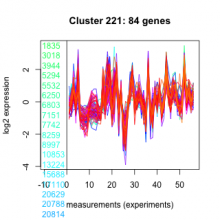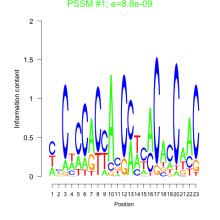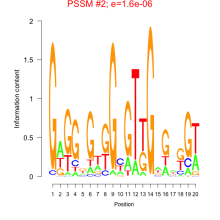268807 (RIR1_2) PLN02437Thalassiosira pseudonana
| Chromosome | Product | Transcript Start | End | Strand | Short Name | |
|---|---|---|---|---|---|---|
| 268807 | chr_5 | (RIR1_2) PLN02437 | 57562 | 60884 | - | PLN02437 |
| NCBI ID | Ensembl Genomes exon ID |
|---|---|
| 7447236 | Thaps268807.3, Thaps268807.5, Thaps268807.4, Thaps268807.2, Thaps268807.1, Thaps268807.6 |
| Expression Profile | Conditional Changes | Cluster Dendrogram | Discovered Potential cis-Regulatory Motifs |
|---|---|---|---|
Thaps_hclust_0221 |
 |
 |
   |
| Normalized Mean Residue | Discovered Potential cis-Regulatory Motifs | |
|---|---|---|
|
Thaps_bicluster_0162 |
0.37 |
 0.0000000088  0.0000016 |
| T. pseudonana | P. tricornutum | P. tricornutum DiatomCyc | F. cylindrus | Pseudo-nitzschia multiseries | E. huxleyi | C. reinhardtii | A. thaliana | P. sojae |
|---|---|---|---|---|---|---|---|---|
| Not available | PHATRDRAFT_45529 | PHATRDRAFT_45529 | Not available | 223844 | Not available | Not available | Not available | Not available |

Add comment